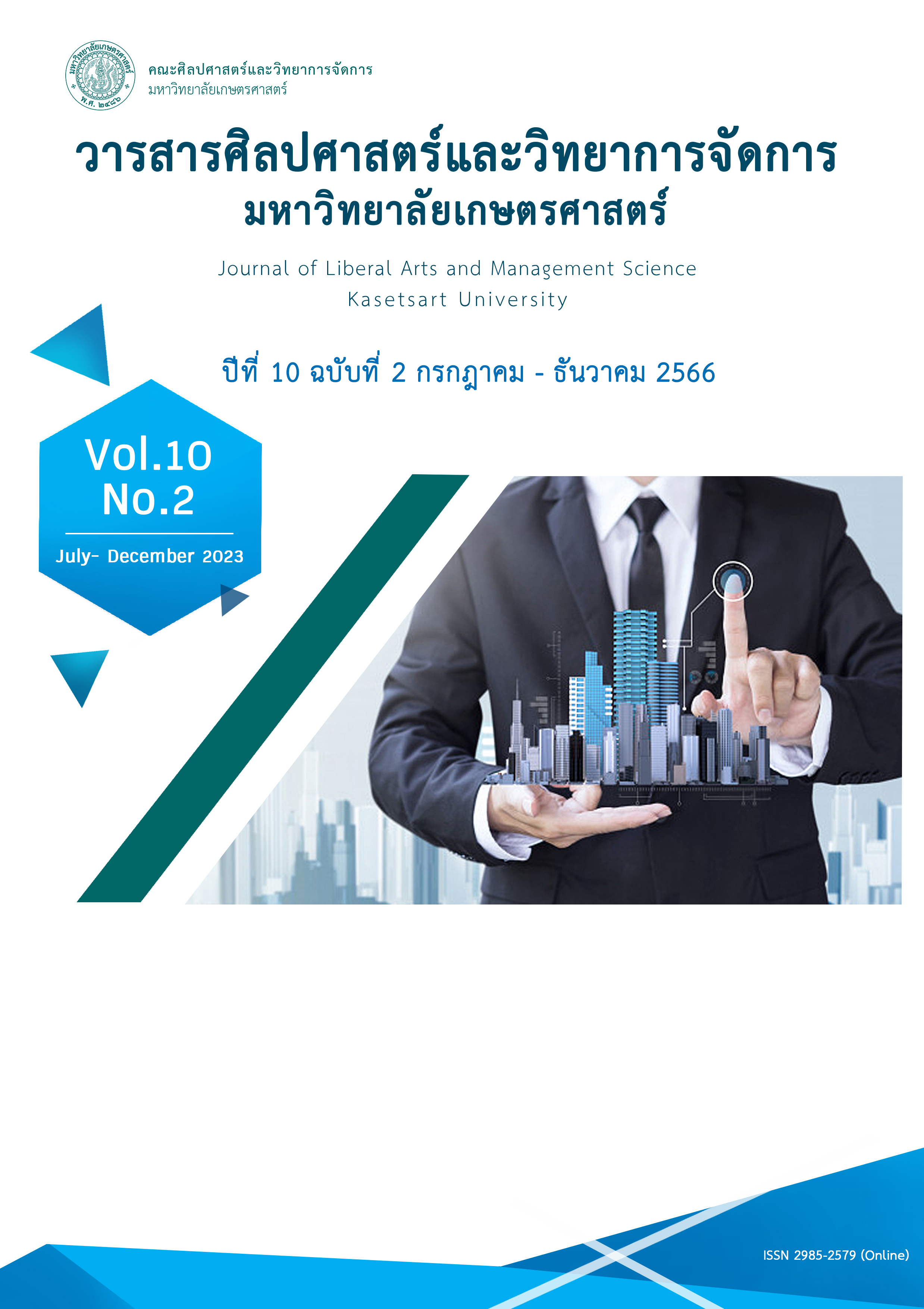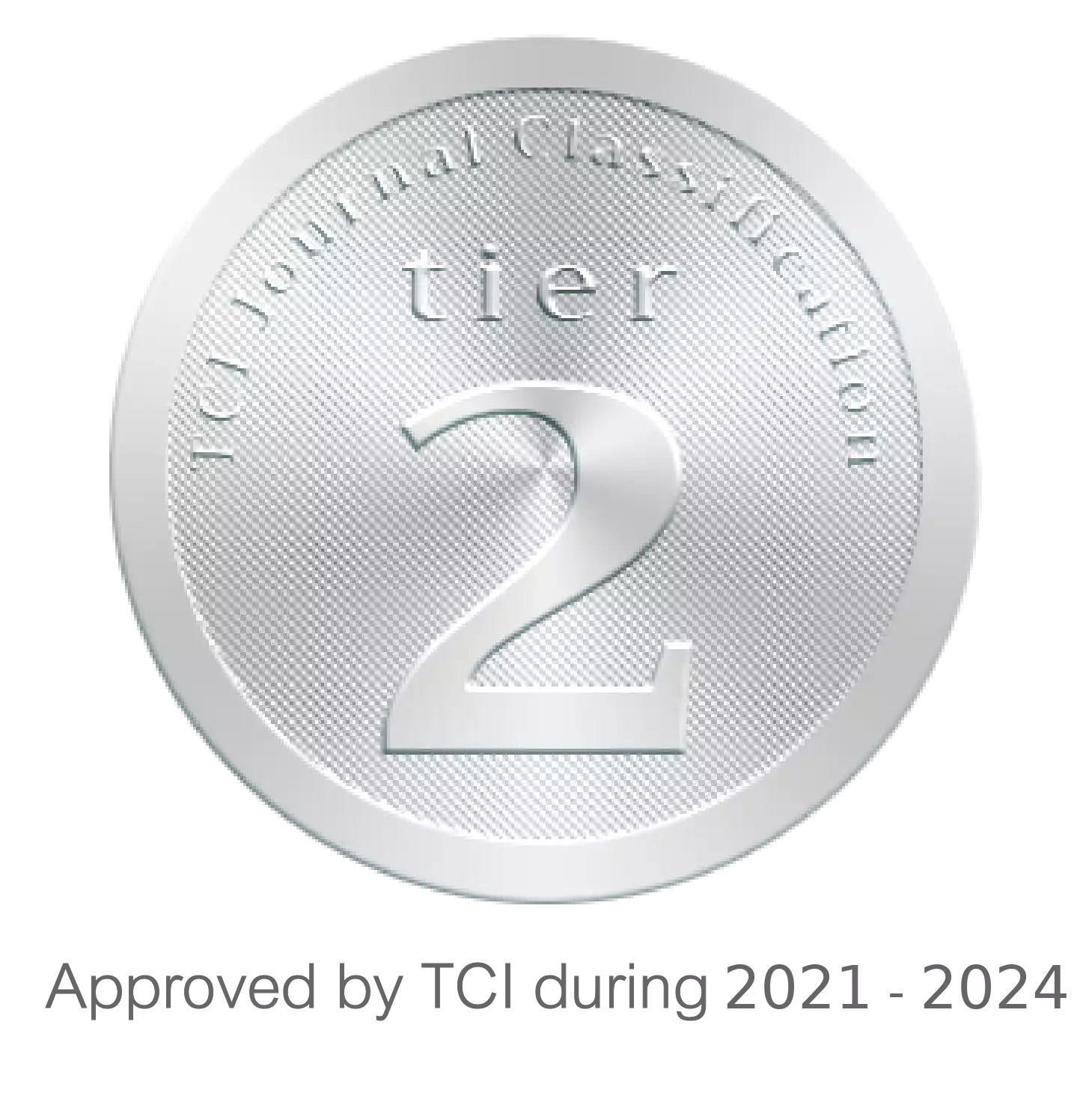ACCEPTANCE OF ELECTRONIC WALLET IN CASHLESS SOCIETY
Keywords:
technology acceptance, e-wallet, cashless societyAbstract
Thailand is in the midst of transitioning towards a cashless society, and electronic wallets play a significant role in daily life. However, acceptance of digital wallets varies among individuals. This study aims to provide an overview of electronic wallets in Thailand and examine the acceptance of these wallets. Through a systematic literature review, it is found that both the public and private sectors drive the cashless society movement, making electronic wallets most popular in Asia. Nevertheless, consumers still have concerns about security. From a study of 11 research articles related to the acceptance of electronic wallets obtained from Thai Journals Online (ThaiJO), it is found that the aforementioned acceptance is theoretically grounded. Two prominent theories, the Technology Acceptance Model (TAM) and the UTAUT2 theory, have been applied to understand and analyze this acceptance. Independent variables, notably perceived usefulness, are commonly associated with frequent usage, followed by perceived ease of use and social influence. Additionally, various factors influence the intention to use e-wallets, including perceived ease of use, perceived usefulness, and social influence. The findings contribute valuable insights to pave the way for a cashless society, offering guidance for future research and expanding academic knowledge.
Downloads
References
Aji, H. M., Berakon, I., & Husin, M. M. (2020). COVID-19 and e-wallet usage intention: A multigroup analysis between Indonesia and Malaysia. Cogent Business & Management, 7(1), 1-16.
Apasrawirote, D., Chemsripong, S., Rurkwararuk, W., & Asawasakulson, A. (2019). The moderating effect of small business staff's perception on the intention to use cloud computing technology, using SEM. Journal of Business, Economics and Communications, 14(3), 85-104.
Apirungruengsakul, N., & Pooripakdee, S. (2018). A confirmatory factor analysis of factors affecting the intention to use mobile wallet. Panyapiwat Journal, 11(2), 30-43.
Bank of Thailand. (2021). Payment behavior through Payment Diary. Retrieved 29 October 2023, from https://www.bot.or.th/content/dam/bot/documents/th/research-and-publications/reports/payment-report/bi-monthly-report/Bi-monthly_report_Vol23-2023_October.pdf
Chaveesuk, S., & Vongjaturapat, S. (2012). Theory of the acceptance of use information technology. KMITL Information Technology Journal, 1(1), 1-21.
Crowdabout. (2022). พฤติกรรมการใช้จ่ายผ่าน E-wallet ของปี 2565. Retrieved 27 December 2023, from https://crowdabout.io/blog/electronic-wallet/
Fabris, N. (2019). Cashless society–the future of money or a utopia?. Journal of Central Banking Theory and Practice, 8(1), 53-66.
Finance-Rumour. (2020). What is an e-Wallet (Electronic Wallet)? How does it work?. Retrieved 20 October 2023, from https://www.finance-rumour.com/money/what-is-e-wallet/
Gorshkov, V. (2022). Cashless payment in emerging markets: The case of Russia. Asia and the Global Economy, 2(1), 1-10.
HuaPood. (2021). What is an e-Wallet in Thailand, which ones are worth using in 2021?. Retrieved 20 September 2023, from https://www.huapood.com/เงิน/แรงบันดาลใจการเงิน/การเงินรู้แล้วดี/e-Wallet-คืออะไร-ในไทยมีเจ้าไหนบ้างที่น่าใช้
Jensathien, T., & Chaichotchuang, Y. (2023). An analysis of path analysis causal relationship of intentionon use electronic payment technology (E-Wallet) in Bangkok. Ph.D. in Social Sciences Journal, 13(2), 369-383.
Kasikorn Research Center. (2022). How to use mobile banking and E-Wallet to keep (money) safe?. Retrieved 3 November 2023, from https://www.kasikornresearch.com/th/analysis/k-social-media/Pages/Mo-BK-Ewallet-Vid-14-02-22.aspx
Lew, S., Tan, G. W. H., Loh, X. M., Hew, J. J., & Ooi, K. B. (2020). The disruptive mobile wallet in the hospitality industry: An extended mobile technology acceptance model. Technology in Society, 63, 101430. https://doi.org/10.1016/j.techsoc.2020.101430
Lwin, T. H. H., & Thanabordeekij, P. (2019). Factors influencing the use of mobile wallets in Myanmar. Panyapiwat Journal, 11(3), 30-41.
Marketeer Online. (2021). e-Wallet: Online wallet using without cash. Retrieved 26 September 2023, from https://marketeeronline.co/archives/212889
Rahman, M., Ismail, I., & Bahri, S. (2020). Analysing consumer adoption of cashless payment in Malaysia. Digital Business, 1(1), 1-11.
Rathore, H. S. (2016). Adoption of digital wallet by consumers. BVIMSR’s Journal of Management Research, 8(1), 69-75.
Sachdev, N. (2019). The evolution of ewallets: history, benefits and withdrawals. Retrieved 26 October 2023, from https://sociable.co/mobile/evolution-ewallets-history-benefits-withdrawals/
Saetim, S. (2021). Factors affecting behavioral intention to use the mobile wallet of students in prince of Songkla University, Trang Campus. Parichart Journal Thaksin University, 34(3), 87-104.
Sammasut, T., & Witoonphan, N. (2021). The factors that influence the decision using electronic money (E-Money) True Money Wallet at Pattaya City. Humanities and Social Sciences Journal, Ubon Ratchathani Rajabhat University, 12(2), 296-308.
Singh, N., Sinha, N., & Liébana-Cabanillas, F. J. (2020). Determining factors in the adoption and recommendation of mobile wallet services in India: Analysis of the effect of innovativeness, stress to use and social influence. International Journal of Information Management, 50, 191-205.
Sittitham, S., & Sangmahachai, K. (2021). The influence in acceptance and use E-Wallet system on the behavior of using financial services. KKBS Journal of Business Administration and Accountancy, 6(1), 138-154.
Sookto, A. (2021). Cashless society. Retrieved 26 September 2023, from https://library.parliament.go.th/th/radioscript-rr2564-may5
Sripana, M. (2019). The cashless society situation in Thailand. Retrieved 15 October 2023, from https://www.senate.go.th/document/Ext22526/22526772_0002.PDF
Statista. (2023a). Number of cashless transactions worldwide from 2013 to 2021, with forecasts from 2022 to 2027, by Region. Retrieved 17 October 2023, from https://www.statista.com/statistics/265767/number-of-cashless-transactions-worldwide-by-region/
Statista. (2023b). Share of respondents who indicated they use mobile wallet in different countries and territories in the world in 2022. Retrieved 17 October 2023, from https://www.statista.com/statistics/1391056/mobile-wallet-penetration-worldwide-by-country/
Suksrichavalit, K., & Intuluck, W. (2020). The influence of online marketing factors and technology adoption factors on acceptance of payment services via the True Money Wallet application of subscribers in Bangkok. Dusit Thani College Journal, 14(1), 404-418.
Sukwadi, R., Caroline, L. S., & Chen, G. Y. H. (2021). Extended technology acceptance model for Indonesian mobile wallet: Structural equation modeling approach. Engineering and Applied Science Research, 49(2), 146-154.
Tarathonrungreung, J., & Pattanarangsun, P. (2021). Factors affecting the interest in using libra cryptocurrency. Journal of Business, Economics and Communications, 16(2), 107-122.
Techaworakhunsiri, T., & Pongsamran, S. (2023). The E-Wallet use behavior of the elderly. Journal of Administration and Social Science Review, 6(3), 129-140.
Thaker, H. M. T., Subramaniam, N. R., Qoyum, A., & Hussain, H. I. (2022). Cashless Society, E-wallets and Continuous Adoption. International Journal of Finance & Economics, 28(3), 3349-3369.
Therdthaveadej, N. (2016). Cashless society: Preparing to cashless society. Retrieved 20 October 2023, from https://www.scbeic.com/th/detail/product/2602
Uthaipan, K., Bantao, N., Sirisom, P., & Suwanna, N. (2021). Factors affecting usage behavior of electronic wallet for the goods purchasing of consumer in Maha Sarakham Province. Southeast Bangkok Journal, 7(2), 139-155.
Wongyara, W. (2020). Factors affecting actual usage of E-Wallet through super apps: Case study of rabbit line pay and grab pay. Journal of Information Systems in Business (JISB), 6(3), 11-28.









